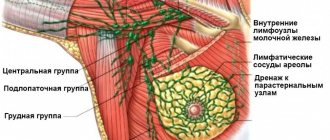Quick Navigation Ovarian Cancer Treatment
Ovarian cancer is classified as a tumor of the reproductive system. The malignant process occurs in the tissues of paired female reproductive glands, which are responsible for the development and maturation of germ cells and perform an endocrine function, producing sex hormones: estrogens, androgens and progestins.
According to WHO, the most common and dangerous form of the disease is epithelial ovarian cancer. The five-year survival rate of women with this diagnosis is only 40%, and relapse of the disease is observed in 80% of cases.
However, in general, ovarian cancer is not the most common cancer. It is in 9th place in the structure of female cancer incidence (in 2021, 14,318 women fell ill with ovarian cancer). Ovarian cancer is most often diagnosed in women over 45 years of age.
Characteristics of the disease
Adenocarcinoma is a cell formed from glandular epithelium. It can affect both organs at once, but is more common on one side. The epithelial node is a malignant disease with rapid development. As the tumor enlarges, it can rupture the walls of the organ.
The node is formed mainly in women after 40 years of age, but in medical practice there are examples of diagnosis in young girls. The development of the disease occurs at a rapid pace, affecting the tissue of nearby organs with early metastases. During their development, malignant cells release toxic elements into the body that suppress the immune system and worsen the patient’s well-being. In medical practice, examples are given of adenocarcinomas that are not recognized by the body's immune mechanisms.
Ovarian cancer
It is difficult to detect the disease in the early stages due to the special structure of the organs of the female reproductive system. The oncological process is asymptomatic in the early stages. The neoplasm develops rapidly, penetrating with metastatic sprouts into the abdominal organs and lymph nodes. The result of treatment depends on the time of detection and the age of the patient.
ICD-10 pathology code C56 “Malignant neoplasm of the ovary.” Sometimes doctors use other codes - C79.6 “Secondary malignant neoplasm of the ovary”, D07.3 “Other and unspecified female genital organs”.
Pathogenesis
Speaking about the pathogenesis of ovarian cancer, most experts agree that a benign tumor initially develops, which gradually loses differentiation. First, a benign tumor appears, later a borderline tumor, and then a malignant tumor. Canceled that tumors come in two types. Formations of the first type grow slowly, they are delimited from the tissues by a capsule, and they are characterized by a good prognosis. This type includes poorly differentiated mucinous, serous, clear cell tumors, as well as Brenner tumors.
Formations of the second type are highly aggressive cancer, the precursors of which have not been established. This type also includes well-differentiated serous carcinoma , mixed mesodermal tumor , and undifferentiated carcinomas . Such formations are genetically unstable.
In 90% of cases, ovarian cancer develops from a single pathological cell.
Reasons for the development of pathology
Doctors cannot say for sure what causes a malignant neoplasm to develop in the ovaries. Scientists are still arguing about a single cause of pathology. It could be as follows:
- Taking hormonal-based birth control pills for a long time.
- Significant excess of normal weight is obesity, close to obesity.
- Living in an area contaminated with toxic and carcinogenic substances.
- Impact of radioactive elements on the body.
- Treatment of infertility with certain medications that can cause the formation of malignant cells.
- Hereditary predisposition.
- The onset of the menstrual cycle ahead of schedule and late menopause.
- Excessive passion for decorative cosmetics in the form of bulk substances.
- Surgical removal of the ovary, tubal ligation.
- Unbalanced diet.
Scientists have proven with examples that if a woman has breast cancer or another organ, the risk of developing ovarian adenocarcinoma in her daughter increases. Therefore, doctors advise in this case to be regularly examined by a gynecologist and oncologist.
Definition
A tumor can be classified as hormone-dependent in a situation where it has receptors for the components estrogen and progesterone . It is these protein molecules that are localized in the surface zone of the cancer-affected cell.
Location of the pituitary gland
The degree of progression of the disease and the growth of compaction are directly affected by the strength of the effect of one or another type of hormone on the affected tissue fragments.
According to statistics, such pathologies occur in every tenth case of diagnosis of a malignant anomaly and are characterized by a calmer course, lack of aggressiveness and extremely rarely metastasize , which not only facilitates treatment, but also gives a good prognosis for the positive dynamics of complete recovery.
Hormone-producing lumps differ from hormone-dependent ones; they are more aggressive, move faster from stage to stage, grow rapidly and are difficult to treat. They have a more pessimistic prognosis for survival. They often recur.
Detailed information about the disease in this video:
Signs of the disease
The first stages of the development of the disease occur without the presence of characteristic signs by which a tumor could be identified. Symptoms appear late in the disease. But the signs are not specific, which makes diagnosis much more difficult:
- Irregularities during the menstrual cycle - irregular arrivals.
- Uncharacteristic pain with discomfort in the lower abdominal cavity.
- Increased gas formation in the small intestine.
- Satiety with a feeling of fullness in the stomach when eating a small amount of food.
- Disturbances in the functioning of the digestive tract.
- Large tumors are detected by palpating the problem area.
- Also, when a large volume is reached, pressure occurs on the internal organs, which is accompanied by difficulty breathing.
- Intestinal obstruction is recorded.
- There may be pain during sexual intercourse.
The disease in its final stages has characteristic signs - enlarged lymph nodes, constant shortness of breath and abdominal deformation.
Symptoms of ovarian cancer
Early signs of ovarian cancer are easy to miss because they are very similar to the symptoms of other diseases and, in medical terms, are nonspecific, that is, they can be observed both in healthy women and in women with an already developed malignant process. These may include:
- dyspepsia (bloating, heaviness, feeling of fullness, early satiety);
- abdominal pain, mainly in the lower sections;
- frequent urge to urinate;
- palpable formation in the lower abdomen;
- progressive weight loss for no apparent reason.
Ovarian cancer may be accompanied by other symptoms:
- increased fatigue;
- constant feeling of fatigue;
- heartburn;
- constipation;
- backache;
- menstrual irregularities;
- feeling of pain during sexual intercourse;
- dermatomyositis (an inflammatory disease that causes skin rash, muscle weakness, inflammation in the muscles - rare).
These symptoms do not necessarily indicate the development of a malignant process. They may be caused by other conditions or diseases. Only a doctor can determine exactly what they are connected with. However, when they appear, it is very important not to delay the visit to the clinic.
Types of adenocarcinoma
When classifying neoplasms by histological structure, the following types are distinguished:
- Serous ovarian adenocarcinoma is considered by scientists to be one of the aggressive forms of cancer. Develops simultaneously in two organs. Malignant pathogens secrete a specific substance identical to fluid from the epithelial layers of the fallopian tubes. Consists of many multi-chamber formations resembling cysts. A well-differentiated tumor can reach gigantic sizes - one of the distinguishing features. Metastases are formed at stage 2 of development. Metastatic germs spread first into the peritoneal tissue (omentum), associated with the digestive tract and hematopoietic organs. This explains the early disruption of digestion and blood flow. Free fluid (ascites) begins to accumulate in the abdominal cavity - the height of the fluid level is from 10 mm to 50 mm. It is diagnosed mainly in women after 35 years of age.
Ovarian cancer on MRI
- The poorly differentiated form of the tumor is characterized by a set of poorly differentiated pathogens. This explains the absence of clear signs of the node. The tumor forms slowly, increasing slightly in size. Doctors consider this form less dangerous due to its low malignancy.
- Papillary adenocarcinoma occurs in 80% of all cases. The neoplasm contains inside a capsule with liquid, covered with a layer of papillary epithelium. Because of this structure, doctors often confuse the type of node, which delays the correct diagnosis. This requires an extensive study of the structure, internal fluid, and degree of malignancy. This will allow you to exclude similar tumors based on symptoms.
- Mucinous consists of many cystic nodes filled with mucus-like fluid. Penetrating into the tissues of the abdominal cavity, metastases actively secrete mucous secretions in high volumes. Cyst-shaped nodes are separated by specific partitions, forming chambers. This structure allows you to quickly determine the type of adenocarcinoma and prescribe the correct therapy. It is formed mainly in women over 30 years of age, affecting both ovaries.
- The clear cell form is rarely diagnosed - in approximately 3% of the total number of cases. The type of this tumor may consist of clove or glycogen pathogens. The clear cell type of neoplasm has not yet been fully studied. Research is still being carried out. Mostly women over 50 years of age suffer. The tumor affects one organ, transforming into a large node.
- An endometrial tumor consists of cysts that are filled with a substance of dense consistency with a brown tint. Cysts form on a specific stalk. Outwardly it looks like a round neoplasm with fairly large shapes. The inside of the cyst is filled with the epithelium of a squamous cell lesion. Women over 30 years of age suffer. The formation is capable of penetrating the uterine body, provoking a secondary oncological focus. The node develops quite slowly. In the early stages, characteristic signs of the disease are usually not observed. Early detection increases the chance of recovery.
Prognosis and prevention
Ovarian adenocarcinoma in the vast majority of cases has an unpleasant prognosis, this is due to late diagnosis of the disease. The life expectancy of patients always depends on what stage the tumor was when it was detected, as well as on the body’s response to therapy.
The five-year survival rate when diagnosed at an early stage reaches ninety percent. At the next stage, recovery occurs in sixty percent of cancer patients. The third stage is completely cured in no more than ten to fifteen women out of a hundred. It is impossible to cure ovarian cancer at the fourth stage.
We recommend reading Tumor of the throat and pharynx - symptoms, types, treatment
Prevention of the disease consists of eliminating risk factors. In order to reduce the likelihood of developing adenocarcinoma, you need to:
- Avoid surgical interventions in the reproductive system and abortion.
- If possible, have your first child before age thirty.
- Do not abuse the opportunity to donate eggs.
- Give up bad habits and watch your weight.
Every woman should undergo a gynecological examination twice a year, and more often if there is a genetic predisposition to cancer. In addition to examination on the chair, ultrasound examination of the organs of the reproductive system should be performed periodically.
Stages of disease development
Doctors prefer to use a traditional and understandable gradation of tumor development for patients:
Stages of development of ovarian cancer
- Stage 1 (g1) of adenocarcinoma formation occurs on the ovarian wall, without going beyond the boundaries of the organ. Metastases usually do not occur at this stage.
- Stage 2 (g2) is characterized by an increase in size. Malignant cells penetrate the tissues of the abdominal cavity, but do not cross the pelvic area. Metastases are rare and depend on the type of tumor.
- At stage 3 (g3), ovarian adenocarcinoma develops with metastases to the liver, inguinal lymph nodes and other abdominal organs. Characteristic symptoms for this type of disease appear.
- At stage 4 (g4), the tumor continues to grow in size. Metastases penetrate into brain cells, lungs and bone tissue. At this stage the disease is often diagnosed.
Doctors often detect inflammation against the background of oncological development in the ovarian cavity, characterized by a painful sensation in the lower abdomen with a pulling character. This symptom is rarely associated with cancer. This is precisely what is associated with the difficulty of identifying pathology in the early stages. Metastases, penetrating into the liver tissue, provoke the accumulation of large amounts of fluid in the abdominal area. The accumulation of fluid protrudes the abdomen, which becomes noticeable externally. It is at this stage that the disease is often detected.
Endometrioid disease
The spread of endometrial cells (the inner layer of the uterus) to neighboring organs occurs against the background of mechanical trauma and with a decrease in immune defense. Endometrioid tumors can form anywhere in the female body, but most often the problem occurs in the uterus (adenomyosis) and in the appendage area. Tumor-like neoplasms in the ovarian area, arising against the background of external genital endometriosis, have the following symptoms:
- relatively small sizes (from 0.5 to 10 cm);
- thick outer capsule;
- hemorrhagic contents;
- the presence of dense adhesions on the outer surface.
An experienced specialist will suspect an endometrioid cyst based on symptoms and ultrasound findings. To confirm the preliminary diagnosis and for therapeutic purposes, it is necessary to perform endoscopic surgery to remove the tumor.
Diagnosis of adenocarcinoma
To clarify the diagnosis and determine the type of adenocarcinoma, it is necessary to undergo an extensive examination of the body. This is necessary to prescribe the correct treatment and calculate the course. Correctly selected therapy and an accurately established diagnosis increase the chance of recovery.
Diagnostics consists of the following activities:
- The doctor conducts a physical examination of the patient and collects a verbal history about the course of the disease.
- After this, an ultrasound examination (ultrasound) of the pelvic organs is prescribed, which will help determine the exact size and type of tumor.
- Magnetic resonance and computed tomography are a more informative diagnostic method that allows us to identify the structure of the tumor.
- A biological sample of a malignant node is sent to the laboratory for biopsy examination, which will help determine the degree of malignancy of the pathology.
- Blood is required for general analysis and installation of tumor markers.
- You will also need to submit your urine for analysis.
After receiving the diagnostic results, the doctor will decide on the course of therapy and the timing of the necessary procedures.
Classification
According to international histological qualifications, the following types of carcinomas are distinguished:
- serous - (carcinomas of this type are distinguished as low and high grade);
- mucinous;
- endometrioid;
- clear cell;
- serous-mucinous;
- Brenner's malignant tumor;
- undifferentiated;
- mixed epithelial.
There are several stages of the disease according to the degree of its development:
- Stage I – only the ovaries are affected.
- IA - only one ovary is affected, ascites .
- IB – both ovaries are affected, there is no ascites.
- IC – a tumor appears on the surface of an ovary or two ovaries, ascites.
- Stage II – the disease spreads throughout the pelvis.
- IIA – the uterus or fallopian tubes are affected.
- IIB – other tissues of the pelvic organs are affected.
- IIC – a tumor develops on the surface of an ovary or two ovaries, ascites.
- Stage III – peritoneal carcinomatosis develops, metastases appear in the liver and other organs of the peritoneum, and the inguinal lymph nodes are affected.
- IIIA - the process spreads within the pelvis, seeding of the peritoneum occurs.
- IIIB – metastases appear, the diameter of which is up to 2 cm.
- IIIC - metastases appear, the diameter of which is more than 2 cm, the retroperitoneal and inguinal nodes are involved.
- IV
– distant metastases appear.
Germ cell tumors are also identified, some varieties of which can be malignant. Germinogenic formations are associated with malformations of the primary germ cell. This type of tumor includes teratoma (tetrablastoma) - a tumor that can be either benign or malignant. This is an embryonic cell tumor that is formed from layers of endo-exo- and mesoderm. It appears even before birth, and can appear at any age. Despite the fact that different types of such tumors are identified (fetal neck teratoma, sacrococcygeal teratoma, etc.), most often in women it appears in the ovaries. Immature teratoma can be malignant and metastasize to other organs.
Treatment of pathology
The basis of therapy lies in the type of disease, the patient’s age and well-being. The use of each method depends on the stage of the disease and the degree of damage to the body. Usually a course of chemotherapy is used at the initial stage. Treatment mainly consists of surgical excision of the malignant neoplasm.
Early detection of pathology is treated by radical removal of the malignant focus. The large size and deep penetration of pathogenic cells into the ovarian tissue requires removal along with the organ.
The spread of metastases affects the surgical process. Small tumors are excised, including healthy tissue. Deep damage to the ovary requires removal of the organ itself. Sometimes doctors, together with the ovary, remove the uterine body and abdominal omentum. After the operation, courses of chemotherapy are prescribed.
Carrying out a chemotherapy procedure
Sometimes chemotherapy becomes the main treatment method. This happens when there are contraindications to surgery. The courses use drugs based on cytostatics that negatively affect cancer cells.
After the therapeutic course, the patient is under constant medical supervision. This is required to prevent relapse and other possible complications. The appearance of complications requires adequate treatment.










